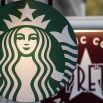Adults tested positive for COVID-19 are twice likely to have dined out at a restaurant, study says.
During the coronavirus pandemic, restaurant dining has been proven to be a hard sell. There are 25% of Americans or one in four of them, do not feel comfortable dining out, according to a recent YouGov survey taken for SevenRooms, a travel booking service. Meanwhile, almost the same number or 23%, said that they continue with takeout or delivery for the rest of the year while high numbers say they prefer outdoor seating (42%) rather than indoors(29%).
A new study by the Centers for Disease Control and Prevention (CDC) indicates that visiting establishments, particularly restaurants with on-site eating and drinking, elevate the risk of becoming infected with COVID-19. At eleven healthcare facilities across ten U.S. states, the CDC identified 314 symptomatic adults tested for coronavirus. These states are California, Maryland, Massachusetts, Colorado, Minnesota, North Carolina, Ohio, Washington, Tennessee, and Utah.

The participants were asked by CDC personnel whether they had community exposures in the two weeks before being tested.
CDC personnel asked the participants whether they had various community exposures in the two weeks before being tested. Similar behavior generally reported participants with and without COVID-19. The COVID-19 positive respondents were no more or less likely with the COVID-19 negative respondents to have gone; shopping, gone to the office, visited a salon, attended small gatherings with ten or fewer people in a home, visited the gym, attended a gathering with more than ten persons in a home, used public transportation, attended a religious service, or gone to a bar or coffee shop.
However, a significant difference came regarding dining out in a restaurant. Twice likely, respondents who tested positive for COVID-19 have reported eating out during the previous two weeks than those who tested negative. The CDC researchers concluded, "Efforts to reduce possible exposures where mask use and social distancing are difficult to maintain, such as when eating and drinking, should be considered to protect customers, employees, and communities."
As per Forbes, CDC's investigation did not notice between participants who sat indoors and those who dined out in a restaurant. Outdoor dining has a lower risk for COVID-19 transmission; many health experts consider it. The CDC states in its guidance for restaurants and bars that the risk of COVID-19 spread such as:
- Drive-through, takeout, and curbside pickup have more risk when offered in addition to other options. The on-site dining is limited to outdoor seating, where chairs and tables are distanced at least six feet apart.
- Foodservice limited to delivery, takeout, drive-through, and curbside pickup is the least risky environments.
- On-site dining with indoor and outdoor seating is the highest risk wherein seating capacity is not reduced, and tables are not spaced adequately with at least six feet apart.
- Even more risky is on-site dining with indoor and outdoor seating with reduced capacity to allow tables to be spaced at least six feet apart.
According to a CNBC report, several months after a JP Morgan chase study linked in COVID-19 to restaurant visits, a CDC study came. From 30 million chase cardholders with John Hopkins University's COVID-19 tracker, JP Morgan cross-referenced data. The organization found out that higher restaurant spending shows a rise in new infections in the same state three weeks later. In-person dining is called "particularly predictive," by the analyst at JP Morgan, Jesse Edgerton, who conducted the study.
Check these out:
Philippines Study Coconut Oil as Potential Treatment for COVID-19 Disease
Restaurant Gives Free 30,000-Calorie Burger If You Could Eat It In An Hour
Walmart Starts Testing Drone Delivery









